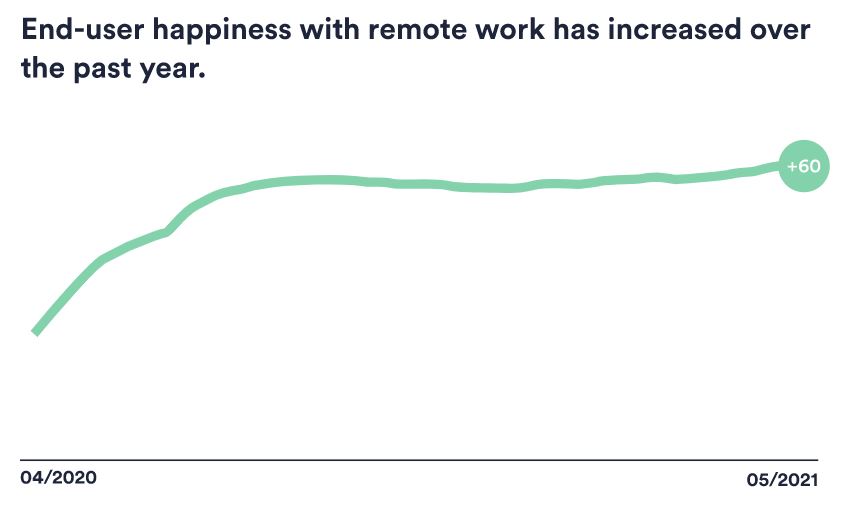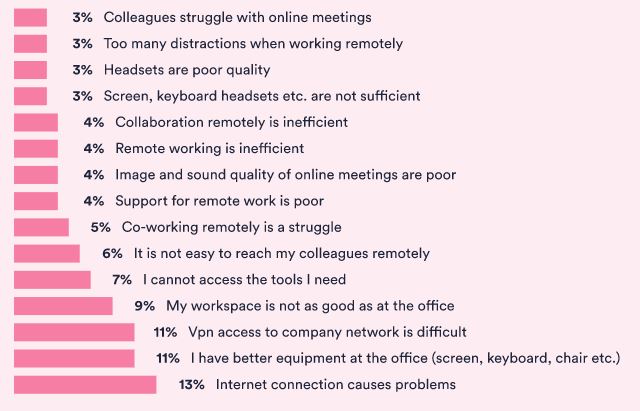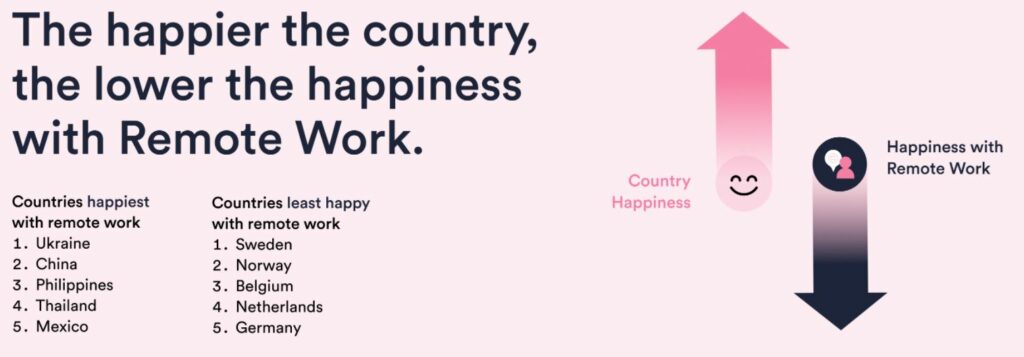Few people need reminding that the global panic of 2020, that many parts of the world are unfortunately still struggling with in 2021, significantly altered traditional ways of working – with a key part of this being the move from office-based to remote work. For some employees, the pros and cons of home-based work are no longer relevant, with them needing to return to their office (if they haven’t already). For others though, the need or opportunity to work from home – or to now work from anywhere (WFA) – remains. But how well have these remote workers been supported by IT – in both IT service delivery and support terms – and how does the ITIL-based status quo need to change to better support them going forward?
Many of the answers lie in the employee feedback, related to their experiences, that has been provided to our customers since the start of the pandemic, including data related to the impact of remote work on their productivity/efficiency.
Since the pandemic started, how well have remote workers been supported by IT and how does the status quo need to change to better support remote work going forward? @SamiKallioHki explores. #ITSM #EX Share on XMeasuring employee happiness with remote work
HappySignals began collecting remote work experience data from customer employees at the beginning of the pandemic in March 2020. Since which, it has been interesting to see a changing dynamic in terms of what is and isn’t working for remote workers. For example, at the outset of the pandemic, employees were most unhappy with technology-related aspects of working from home – such as VPN access and their internet connection.
Once these technical issues were resolved, the ergonomics of the home office started to become the key issue. For example, employees were missing their second screen and other office equipment that they didn’t have access to at home. When these needs were met, the collaboration challenges with colleagues started to get more attention from end users. Where, as people realized that collaborating in person might not go back to what it was before the pandemic, best practices for remote collaboration seemed more important than ever before.
Importantly, as shown in the chart below, employee happiness with remote working increased significantly as these issues were systematically addressed by our customers.

Most employees have responded positively to remote work – here’s why
A key observation from the experience-based feedback collected from remote-working employees between December 2020 and May 2021 is that:
39 times more employees say that remote work is efficient than say that it is inefficient.
This is 24,782 positive versus 635 negative pieces of feedback.
But why is this the case?
Before you look at the chart below, what do you think are the factors that provide your employees with a positive remote work experience?

I’m not sure what you thought, but our experience data – as shown above – highlights that the top factors that provide a positive remote work experience relate to interpersonal aspects.
The factors that create a negative remote work experience
It’s great to know what’s working well, but which factors are hindering remote work?
It’s great to know what’s working well, but which factors are hindering remote work? Survey data from @HappySignalsLtd helps shed some light in this article #remotework #servicedesk Share on XYou can guess again if you wish. As shown in the chart below, these key reasons for negative feedback on remote work have slightly changed since the first half of 2020 but internet connection issues and workspace ergonomics are still at the top.

What the experience data also shows is the difference in remote work happiness across various countries and regions.
Insight into country-specific happiness and unhappiness
When we looked at the country-specific levels of happiness with remote work, we wondered why different regions and countries were scoring remote work in such different ways. Then, by comparing the experience data with the Happiest Countries in the World 2021, an interesting pattern showed up.
There’s an inverse relationship between the level of happiness of people in different countries and how the happiness with IT services is scored there – i.e. the happier the country, the lower the happiness with remote work.

More work is needed to better understand this correlation but it does make sense – because end users are impacted by their environment and the way they rate IT services is not only reflective of service quality. Importantly, though, organizations can already use this benchmark data to improve operations and outcomes. For example, global organizations can compare the differences between their countries of operation, in terms of IT happiness, to enable their IT departments to make better decisions around allocating more or fewer resources, and improvement investments, to different locations.
Hopefully, this insight into how employees feel about remote working has been insightful. If you would like to find out more, then read the (freely available) The Happiness Score™ Report here.
Sami Kallio
Sami Kallio is the CEO of HappySignals, a company focused on helping businesses to improve their internal services by shifting the focus from traditional metrics to employee experience - by measuring and analysing employee happiness and productivity. Sami says:” I believe that enterprises should no longer try to save more money from support services. Rather that organizations should put more focus on business value. At HappySignals we help organizations to measure and understand their employees' experience and productivity in a new way."

